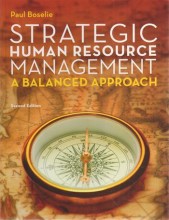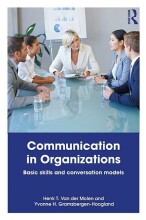Summary: Powerpoints
- This + 400k other summaries
- A unique study and practice tool
- Never study anything twice again
- Get the grades you hope for
- 100% sure, 100% understanding
Read the summary and the most important questions on PowerPoints
-
1 Introduction
-
Businesses often think they contribute to society, but they're not. Business models are developing to enable businesses to do a better job. However, what is the crux here?
We should do it together, we should together look where we are going to, to fulfill human needs and not exceed the planets' resources. There are several trends happening and in this course we view whether this is beneficial for society and the planet or not. -
1.1 Artikel: Vermeulen & Witjes (2015) On addressing the dual and embedded nature of business and the route towards corporate sustainability
This is a preview. There are 4 more flashcards available for chapter 1.1
Show more cards here -
In the article about dual and embedded nature and need towards corporate sustainability, Vermeulen and Witjes refer to factors that cause the need for more inclusive challenges in business routines. What are the three main reasons?
1. The western lifestyle
2. Growing middle class in emerging economies
3. Pressure of MNC's to improve social and environmental performance. -
What is the dual element Vermeulen & Witjes refer to?
Vermeulen & Witjes argue thatsingle organizations can only exist because they're part of a largerproduction andconsumption system. In economic terms this is called the value chain, in environmental terms this is called the product life cycle.
The dual element refers to simultaneously being related to theproduction and thesocial dynamics. -
In the paper of Vermeulen & Witjes, the key questions to implement corporate sustainability are discussed. How do they define corporate sustainability?
They define corporate sustainability as individual companies implementing strategies to achieve sustainable development. -
What is the somewhat limited Rubik's Cube?
- Combining the issues dimension (PPP)
- Time dimension (now and then)
- Place dimension (here and there)
- Combining the issues dimension (PPP)
-
What are the issues dimension?
- Planet (ecological threats)
- People (threats for people)
- Prosperity (goal for society)
- Planet (ecological threats)
-
What are the five key search directions for societal transformation?
- Climate control and renewable energy
- Circular economy
- Neutral or positive impact on biodiversity
- An economic system creating shared triple value (community well being, poverty oriented and bottom of the pyramid)
- Equitable market and governance institutions
- Climate control and renewable energy
-
1.1.1 How should the dual nature be conceived?
This is a preview. There are 1 more flashcards available for chapter 1.1.1
Show more cards here -
In the article Dual and Embedded nature of business and the route towards corporate sustainability, Vermeulen and Witjes talk about physical dynamics. What is this?
The physical reality ofproducts andservices with their physical impacts on the widerenvironment andecology (chemical, and mechanical processes) -
Why should businesses go from continuous change to transformative change to achieve inclusive corporate sustainability?
Continuous change is through a plan-do-check-act cycle. It's mostly through rationale planning. This causes single and double loops, but also causes repetitive learning which tends to get frozen in routines. Therefore, transformative learning is needed to unfreeze these routines and jump towards more inclusive corporate social sustainability. -
What are the three process steps in which an organization can unfreeze routines and jump to corporate sustainability?
1. Support companies in making sense of sustainable developments and what that implies for them.
2. Proper view on the current dual and embedded nature of the company.
3. Proper view on the externally available and innovative ways in which societal needs can be satisfied with products and services
- Higher grades + faster learning
- Never study anything twice
- 100% sure, 100% understanding
Topics related to Summary: Powerpoints
-
Introduction - Artikel: Vermeulen & Witjes (2015)On addressing the dual and embedded nature of business and the route towards corporate sustainability
-
Introduction - Artikel: (Rifkin, 2015) The zero marginal cost society
-
Bio-based economy
-
Societal Challenges - Artikel: Planetary boundaries: Exploring the safe operating space for humanity (2009)
-
Societal Challenges - Artikel: The zero marginal cost society: the internet of things, the collaborative commons and the eclipse of capitalism (2014)
-
Societal Challenges - Artikel: Why it's time for doughnut economics (2017)
-
Societal Challenges
-
Circular Economy - Artikel: Circular Economy. The concept and its limitations
-
Circular Economy - Artikel: Towards a circular economy: business rationale for an accelerated transition
-
Circular Economy - The circular economy: New or Refurbished as CE?
-
Circular Economy - Lecture Vermeulen
-
Circular Economy - Lecture OPEN
-
Collaborative and sharing economy
-
Self production economy
-
Digital transformation

































